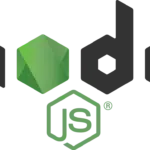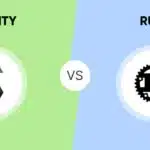| To become a Solidity developer, you should follow these steps: |
You should send your CV to Infuy’s HR department 🙂 to work with Alejandro Narancio (just kidding!). But send it for sure, or…
Introduction to Solidity
Solidity is a programming language for writing smart contracts to produce EVM (Ethereum Virtual Machine) bytecode that ultimately runs on the Ethereum blockchain (or any EVM-compatible blockchain). It is a statically-typed, contract-oriented language that was influenced by C++, Python, and JavaScript. Solidity is designed to be easy to learn for programmers with backgrounds in these languages, but it has its own set of unique features and syntax.
Smart contracts are self-executing contracts which has the terms of the agreement between different parties (for example a buyer and a seller) being directly written into lines of code. They are designed to facilitate, verify, and enforce the negotiation or performance of a contract. Because they run on the blockchain, smart contracts are secure, transparent, and immutable.
Solidity is the most popular language for writing smart contracts on Ethereum, and it is also used on other blockchain platforms. It is an essential tool for developers looking to build decentralized applications (DApps) on Ethereum.
Learn the basics of blockchain technology and how it works
To learn the basics of blockchain technology, you may want to start by reading about the history and underlying principles of blockchain. You can find a wealth of information online, including articles, blog posts, and videos. It can also be helpful to explore different blockchain platforms and their use cases to get a better understanding of how they work and what they can be used for.
For a start we suggest you learn to understand at least the basics of:
- Bitcoin
- EVM
- Consensus algorithms in general
- PoW and PoS
Learn the Solidity programming language
There are many resources available online for learning Solidity, including the Solidity documentation and tutorial, as well as online courses and video tutorials. To learn Solidity, you can start by reading through the Solidity documentation and tutorial, which covers the syntax and basic concepts of the language. You can then practice writing Solidity code by working on small exercises and projects. There are also several online courses and video tutorials available that can help you learn Solidity in a more structured way.
After you learned the fundamentals of the language and are confident on you to develop an entire smart contract with some level of difficulty (for example an escrow). Then we suggest to start to learn the following topics:
- Possible attack vectors on solidity and blockchain in general
- Best practices when programming in solidity
- Solidity design patterns
- How to test your contracts in the different stages of the development cycle (development, testnet, before mainnet, and mainnet)
Practice writing Solidity code by working on small projects and exercises.
Practice is key to becoming proficient in any programming language. As you learn Solidity, make sure to set aside time to practice writing code and solving problems. You can find practice exercises and project ideas online, or you can come up with your own ideas and build something from scratch.
Join online communities or forums
Online communities and forums for Solidity developers are a great place to ask questions, share knowledge, and stay up-to-date on the latest developments in the field. Some popular forums include Reddit, Stack Overflow, and the Ethereum Stack Exchange.
Keep up with developments in the blockchain and Solidity space
Finally, it is important to stay current with developments in the blockchain and Solidity space. This can help you stay up-to-date on best practices, new tools and technologies, and emerging trends. You can do this by reading industry news and blogs, and by participating in online conferences and meetups.
It is also helpful to have a strong foundation in object-oriented programming and familiarity with other languages such as JavaScript.
References
- The Solidity documentation: https://solidity.readthedocs.io/
- The Solidity tutorial on the Ethereum website: https://ethereum.org/greeter
- The “Mastering Ethereum” book by Andreas M. Antonopoulos and Gavin Wood: https://ethereumbook.info/
- CryptoZombies link https://cryptozombies.io/
- The Solidity course on Udemy: https://www.udemy.com/topic/solidity/
- The Solidity course on Coursera: https://www.coursera.org/courses?query=solidity
These resources will give you an introduction to the Solidity programming language and its use in building smart contracts on the Ethereum blockchain. They will help you learn the basics of contract development, and give you a solid understanding of how to write, test and deploy smart contracts.
Do not forget to send us you resume if you would like to work in blockchain 🙂 Contact Us
Posted in Blockchain, Ethereum, Job Openings, Smart Contract, Solidity, Technologies





